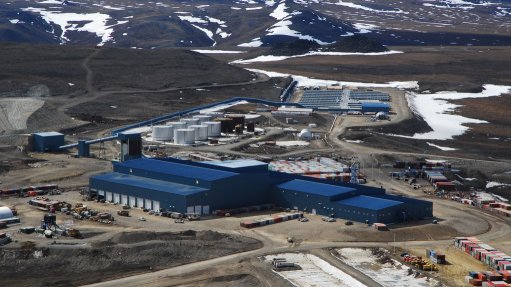
Name: Kupol mine.
Location: The Kupol mine is situated in the north-west part of the Anadyr foothills, on the boundary of the Anadyr and Bilibino districts in the Chukotka Autonomous Okrug, which is located in the Far Eastern region of the Russian Federation.
Controlling Company: Kinross Gold owns 100% interest of Kupol through its wholly owned subsidiary, Chukotka Mining & Geological Company (CMGC).
Brief History: Bema Gold Corporation (Bema) announced in December 2002 that it had completed the terms of a definitive agreement with the government of Chukotka to acquire up to a 75% interest in CMGC, which held a licence to the Kupol gold and silver project. Kinross acquired Bema in February 2007. CMGC completed its repurchase from the State Unitary Enterprise the Chukotka Autonomous Okrug (CUE) of the 25% of CMGC Kinross did not already indirectly own in April 2011, giving Kinross 100% ownership of the Kupol mine and the Kupol East-West exploration licences.
Brief Description: The Kupol mine consists of a high-grade gold and silver vein, which remains open along strike.
Geology/Mineralisation: The Kupol property is situated in the Cretaceous Okhotsk-Chukotka volcanogenic belt. The property is underlain by a bimodal sequence of shallow dipping andesite and andesite-basalt flows and pyroclastic units, rhyolite dykes and flow-dome complexes.
Two principal mineralised systems have been identified at Kupol; the bulk of the mineralisation is hosted in a north-south-trending dilatant splay off a large regional fault structure of similar orientation. The main Kupol deposit consists of one or more polyphase quartz-adularia veins of an epithermal low sulphidation character that are sporadically cut by rhyolite dykes. Gold and silver mineralisation is primarily associated with sulphosalt-rich bands and pods within colloform, crustiform and brecciated veins.
Reserves: Total proven and probable reserves as at December 31, 2013, were estimated at 7.41-million tonnes grading 8.73 g/t gold and 111 g/t silver.
Resources: Total inferred resources as at December 31, 2013, were estimated at 400 000 t grading 13.9 g/t of gold and 214 g/t silver.
Products: Gold and silver.
Mining Method: Underground.
Major Infrastructure and Equipment: Kinross completed a mill expansion in the third quarter of 2013.
The milling process consists of primary crushing and a semi- autogenous/ball mill grinding circuit and includes conventional gravity technology followed by whole ore leaching. Merrill-Crowe precipitation is used to produce gold and silver doré bars.
Counter-current decantation wash thickeners recover soluble gold and silver values. A cyanide destruction system is used to reduce cyanide concentrations to an acceptable level for disposal. Tailings gravity-flow through a pipeline to a conventional tailings impoundment. Final doré bars are shipped to the Kolyma Refinery, near Magadan.
The mill processes higher-grade ore from Kinross’s Dvoinoye mine.
Prospects: Current potential and expansion opportunities exist at Kupol and Dvoinoye.
Contact Person: VP investor relations Tom Elliot.
Contact Details:
Kinross Gold,
tel +1 416 365 5123,
fax +1 416 363 6622,
email info@kinross.com, and
website http://www.kinross.com.